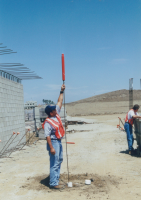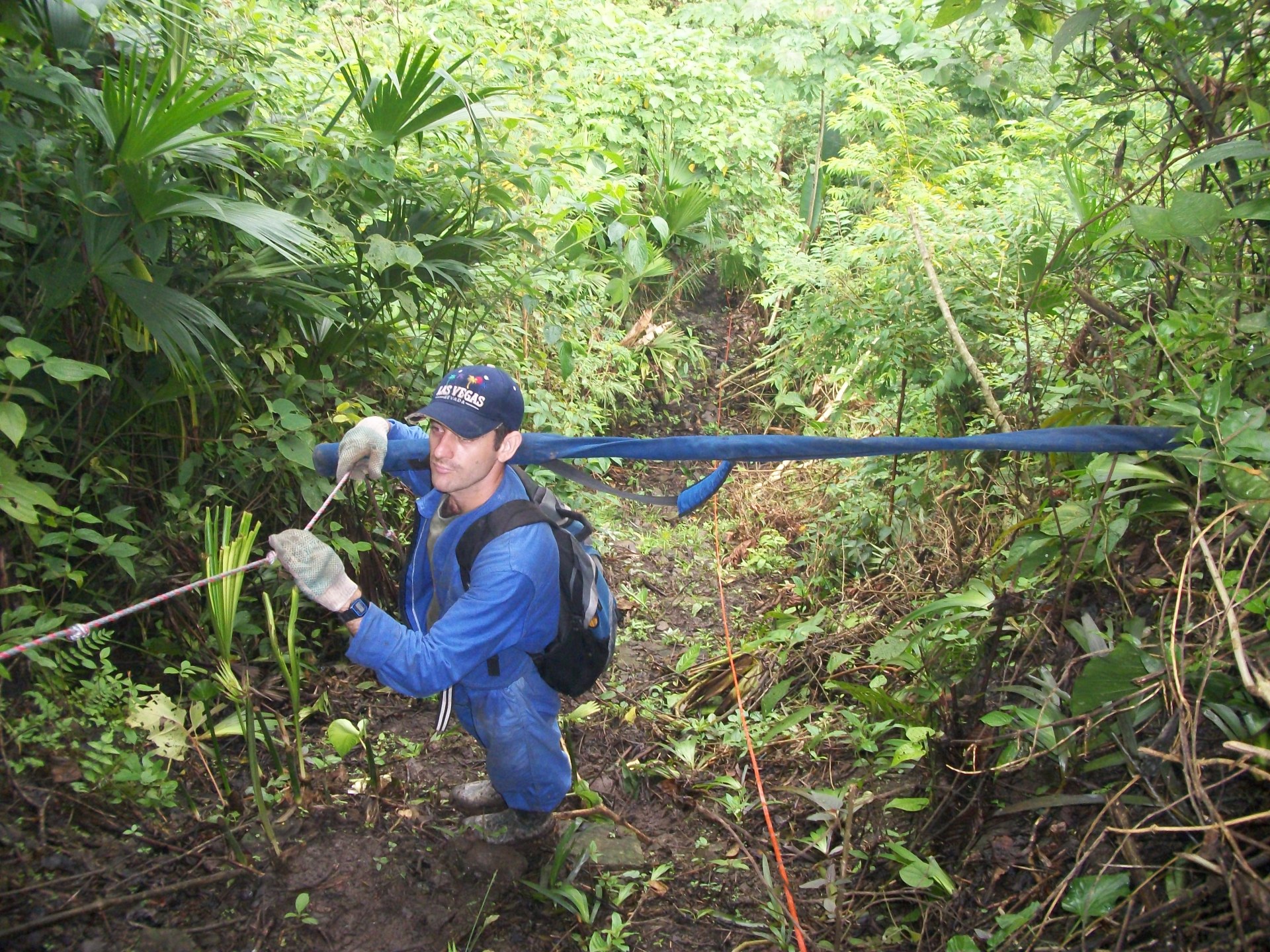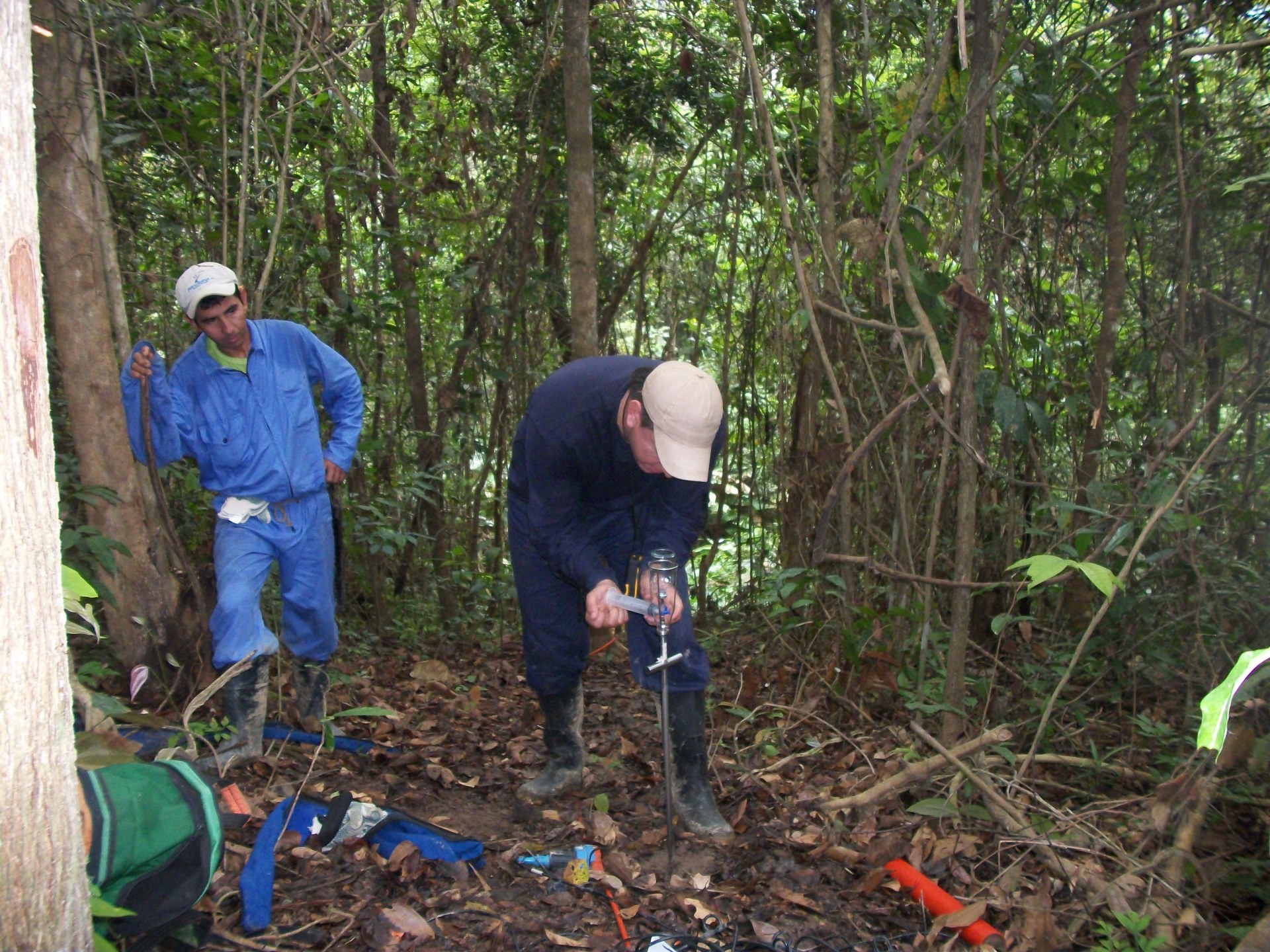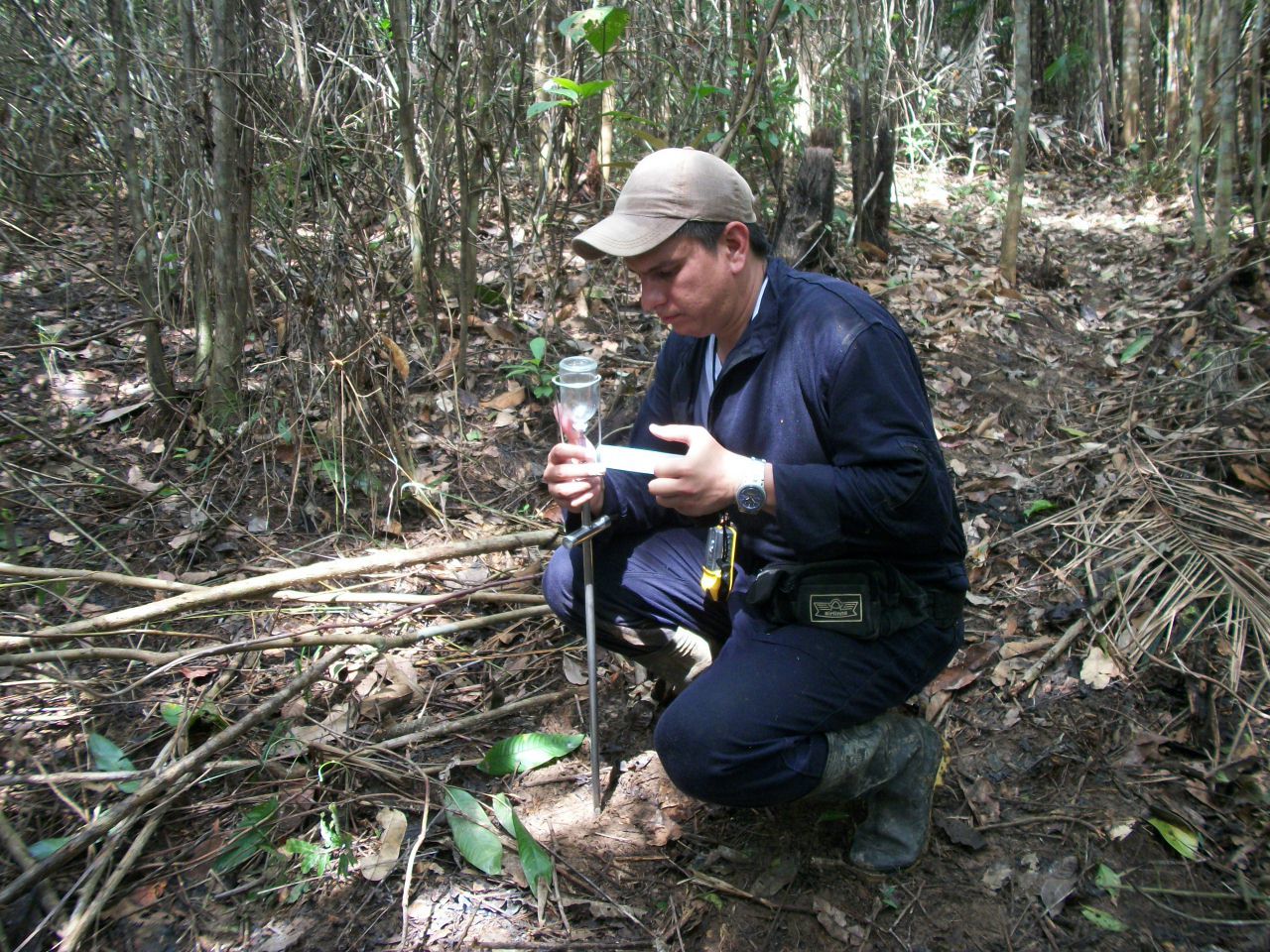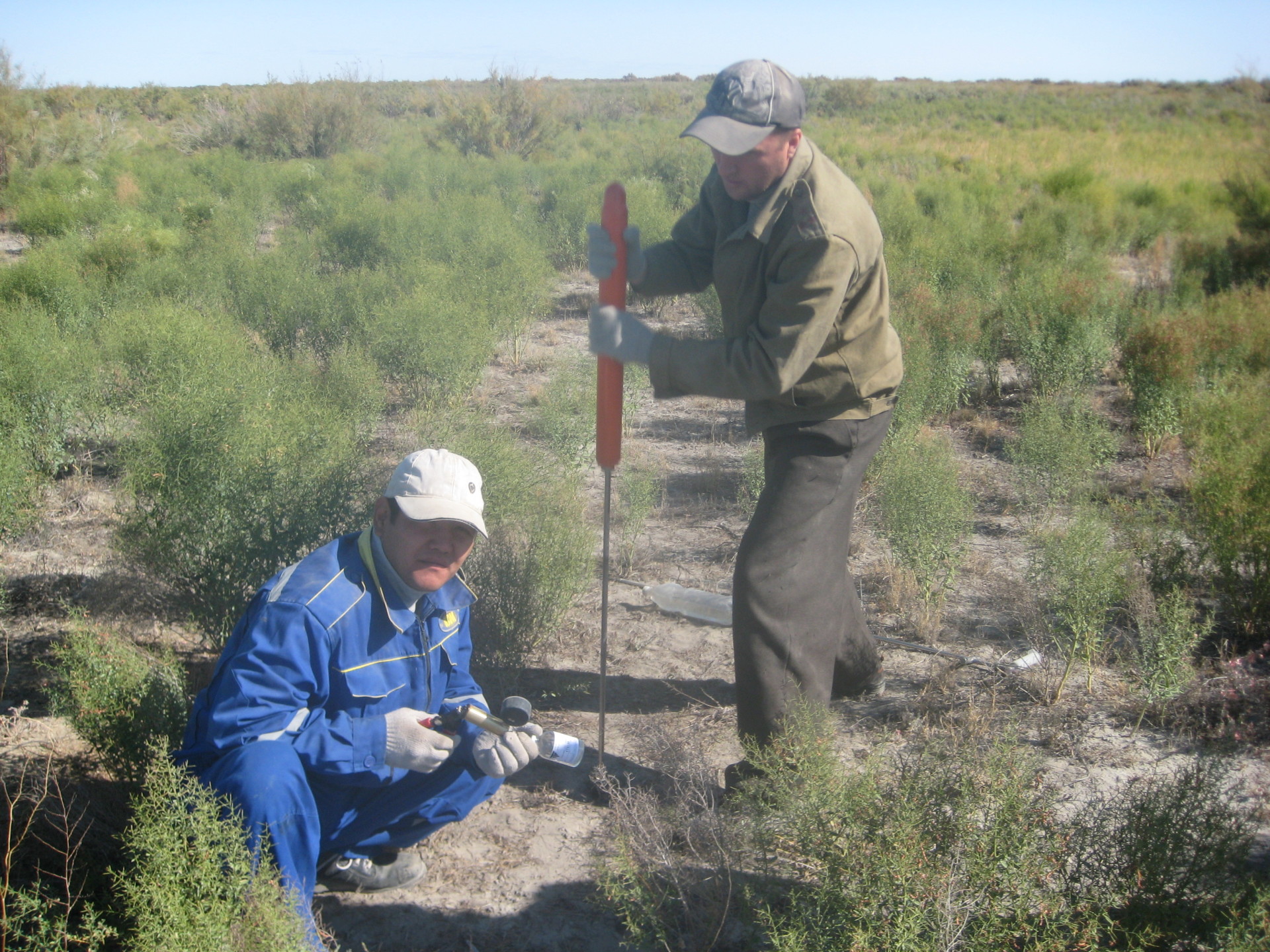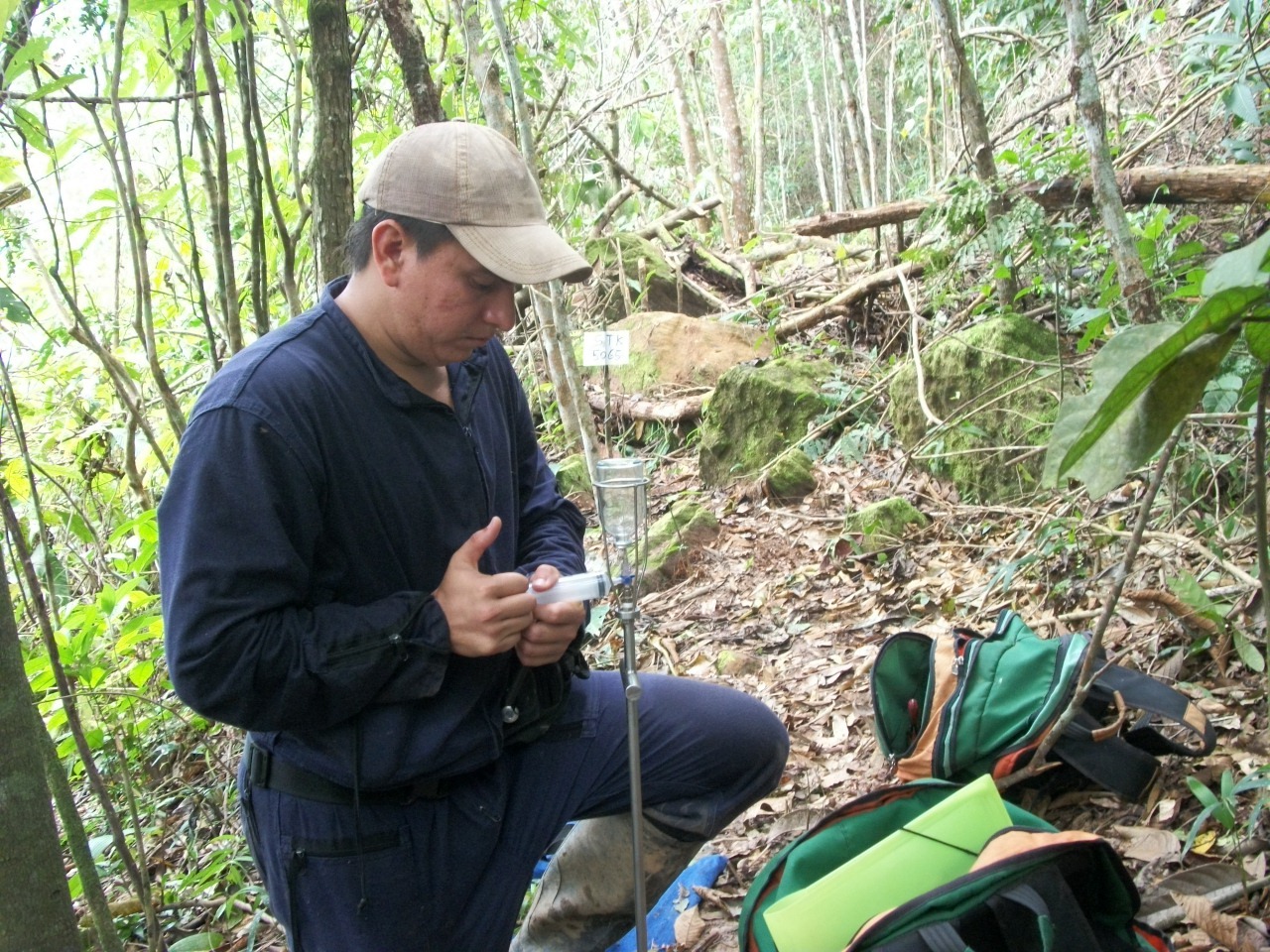
Exploration Technologies, Inc.
.................................................
Exploration Technologies, Inc.
A Worldwide Leader in Petroleum Exploration
.................................................
Published Papers


Exploration Services
Environmental Services
Laboratory Services
High grade your prospects, explore frontier basins. Map the light hydrocarbons that migrate from active petroleum and natural gas reservoirs at depth.
ETI possesses a wide range of capabilities to perform all phases of environmental site assessments involving natural and refined petroleum product surface and subsurface contamination.
Light Hydrocarbon Analyses High Resolution GC C5+ Hydrocarbon Analyses (soil vapor or water) Chlorinated Hydrocarbons Fixed Gas Analysis (CO2, O2, N2) High Resolution GC of Product and Soil Extracts.
More Info
More Info
More Info
Petroleum Exploration
Our Expertise . . .
Exploration Technologies, Inc. (ETI) provides innovative geochemical services that are applicable to both the exploration & environmental industries. ETI's geochemical techniques are employed in the petroleum industry to reduce exploration risk and utilized in environmental assessments for accurate and cost-effective site characterizations.
Petroleum exploration surface geochemical surveys can be used to map the light hydrocarbons expressed through microseeps from active petroleum and natural gas reservoirs at depth. The maps, developed from the survey, serve as a guide to identifying prospective areas in both frontier and mature basins. The light hydrocarbons, when surveyed, analyzed and mapped, using ETI's proven techniques and technology, produce a graphic, geochemical picture of the source rock below. This picture shows whether or not a given area contains petroleum source rocks; whether the area is more oil or gas prone; and finally, whether or not the gas is over cooked and non-productive, or the oil too heavy to produce by drilling alone. Such studies can greatly reduce the area to be searched; helping to focus more expensive exploration techniques, such as 3D geophysical surveys, on those portions of the basin most likely to contain petroleum accumulations and potential reservoirs.
Learn More
ETI has been conducting Exploration Surveys all over the world and we have many examples.
More Info
Exploration Services
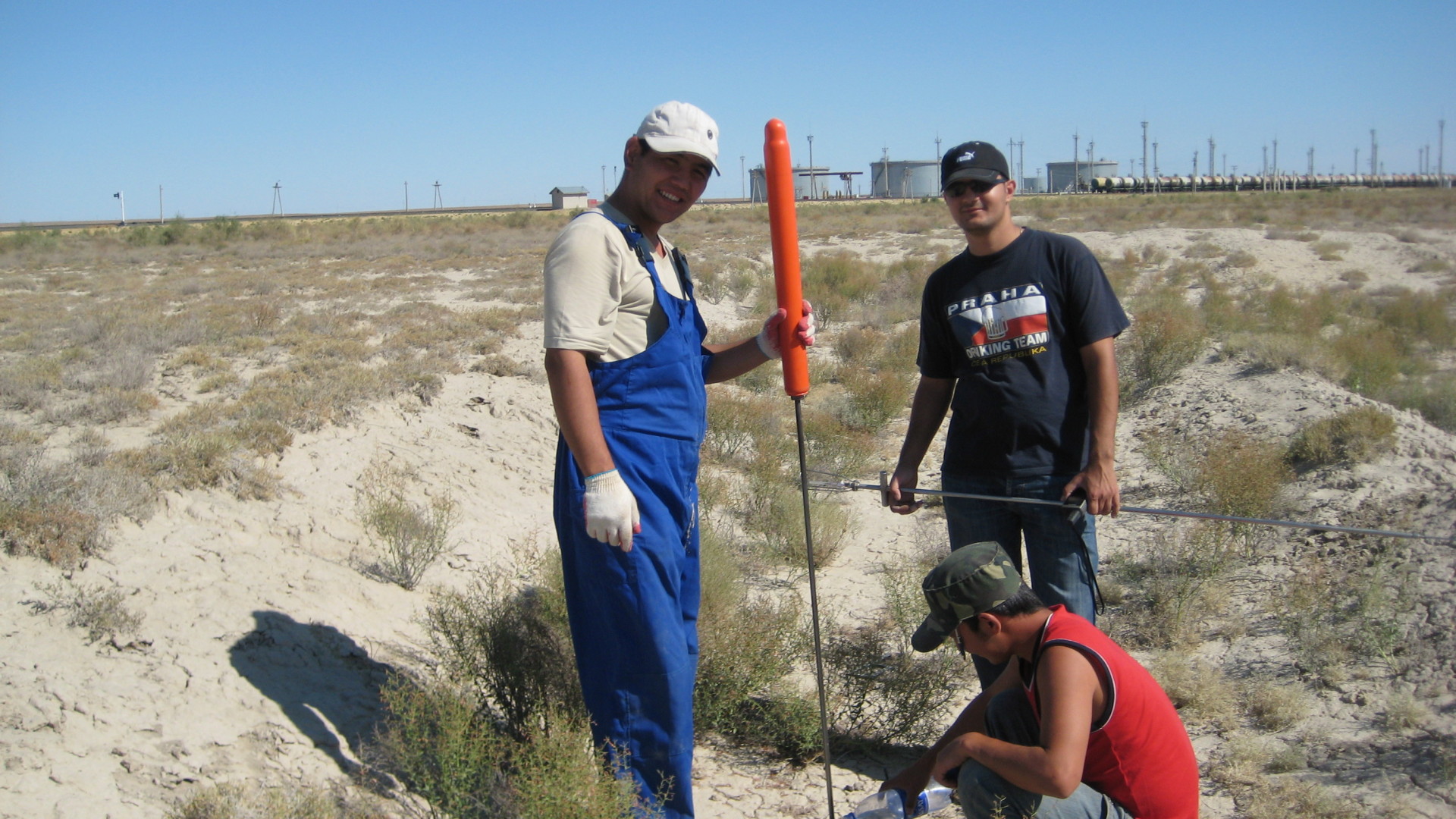

The Exploration Technologies, Inc. (ETI) staff of geoscientists has extensive experience in the research, development, execution and interpretation of various geochemical techniques utilized in environmental studies, petroleum and minerals exploration. ETI possesses a wide range of capabilities to perform all phases of environmental site assessments involving natural and refined petroleum product surface and subsurface contamination. Surface geochemical surveys are utilized by ETI to delineate the horizontal extent of subsurface contamination in soils and/or groundwater. The vertical extent of contamination is subsequently determined using ETI's real-time on-site screening laboratories during borehole drilling operations, thus allowing for a three-dimensional interpretation of the contamination present. These techniques, used in tandem, can provide a very cost-effective accurate evaluation of the subject property while reducing the risk of errors and omissions during the assessment phase. From the fully equipped and experienced crews to the highly qualified laboratory personnel, ETI is dedicated to making the best possible interpretation on which clients can base their environmental decision.
Learn More
ETI has been conducting Exploration Surveys all over the world and we have many examples.
Learn More
Environmental Services
Environmental Services

Environmental Studies
The Exploration Technologies, Inc. (ETI) staff of geoscientists has extensive experience in the research, development, execution and interpretation of various geochemical techniques utilized in environmental studies, petroleum and minerals exploration. ETI possesses a wide range of capabilities to perform all phases of environmental site assessments involving natural and refined petroleum product surface and subsurface contamination. Surface geochemical surveys are utilized by ETI to delineate the horizontal extent of subsurface contamination in soils and/or groundwater. The vertical extent of contamination is subsequently determined using ETI's real-time on-site screening laboratories during borehole drilling operations, thus allowing for a three-dimensional interpretation of the contamination present. These techniques, used in tandem, can provide a very cost-effective accurate evaluation of the subject property while reducing the risk of errors and omissions during the assessment phase. From the fully equipped and experienced crews to the highly qualified laboratory personnel, ETI is dedicated to making the best possible interpretation on which clients can base their environmental decision.
Learn More
ETI has completed many environmental surveys and has been used successfully as an expert witness in many court cases.
Learn More


LIGHT HYDROCARBON ANALYSES
Light hydrocarbon analyses (C1-C4) measure the lightest, most volatile compounds present in natural gas and other petroleum based products. These light hydrocarbon compounds tend to dissipate rapidly with time and/or distance from the point(s) at which petroleum products are introduced into the subsurface environment. The light hydrocarbon analyses allow for the identification and differentiation of natural gas leaks, biogenic methane and refined petroleum product contaminants. Light hydrocarbon compound analyses are also utilized to determine areas of natural gas leakage spills, the presence of gas seepage from deep seated oil and gas reservoirs and/or the leakage from oil and gas well casings.
Soil Gas Studies
Exploration Technologies, Inc. (ETI) has been successfully executing soil gas geochemical surveys since 1984. These surveys are very effective in determining the nature and horizontal extent of subsurface hydrocarbon contamination. Our soil gas collection and sample analysis techniques are capable of delineating sorbed, dissolved and liquid phase hydrocarbon contaminants present in near surface soils and/or groundwater. This technology has been used in areas underlain by sandy, silty and clay rich soils. The sensitivity of the analyses is not significantly affected by highly argillaceous soils typical of the Gulf Coast region. Soil gas geochemistry is very accurate and effective when used properly.
All vapor samples are extracted from soils and collected through a specially designed sampling probe into evacuated 125 cc septum top glass bottles. Soil vapor samples are analyzed in ETI 's Houston, Texas laboratory by flame ionization detector (FID) gas chromatography to determine C1-C4 (methane, ethane, ethylene, propane, propylene and butanes) and C5+ (pentane-xylenes+) hydrocarbon concentrations, in order to characterize and quantify the petroleum hydrocarbon contaminants present. Samples are analyzed for chlorinated hydrocarbons using a dual detector gas chromatograph equipped with an electron capture detector (ECD) and flame ionization detector (FID).
All vapor samples are extracted from soils and collected through a specially designed sampling probe into evacuated 125 cc septum top glass bottles. Soil vapor samples are analyzed in ETI 's Houston, Texas laboratory by flame ionization detector (FID) gas chromatography to determine C1-C4 (methane, ethane, ethylene, propane, propylene and butanes) and C5+ (pentane-xylenes+) hydrocarbon concentrations, in order to characterize and quantify the petroleum hydrocarbon contaminants present. Samples are analyzed for chlorinated hydrocarbons using a dual detector gas chromatograph equipped with an electron capture detector (ECD) and flame ionization detector (FID).
HIGH RESOLUTION GC C5+ (PENTANE-XYLENES) HYDROCARBON ANALYSES/SOIL VAPOR AND/OR WATER
C5+ (pentane-xylenes+) hydrocarbons analyses yield a quantitative measure of the actual volume of "gasoline type " vapors present in near surface soils and/or water. Gasoline range hydrocarbons dissipate more slowly than the lighter fraction (C1-C4) compounds. If specific BTEX analyses are required, a FID equipped with a capillary column is used to quantify benzene, toluene, ethylbenzene, m &p-xylene and o-xylene aromatic hydrocarbons.
Phase II Site Assessments - Learn More

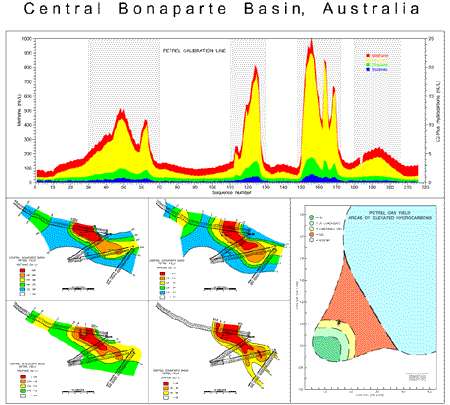
ANALYSIS FOR FIXED GAS (CO2, O2, N2)
If petroleum and/or chlorinated hydrocarbon products are present in subsurface soils or groundwater for a period of time, significant biodegradation of the hydrocarbon compounds occurs. The degradation of hydrocarbon compounds by aerobic and anaerobic bacteria generate significant concentrations of carbon dioxide and methane, respectively, in the subsurface environment. The biodegradation of hydrocarbons by both aerobic and anaerobic bacteria can occur within very close proximity in nature, and can yield elevated concentrations of both carbon dioxide and methane in the subsurface environment. These biochemical reactions are quite common in soils and groundwater containing products such as gasoline, diesel, chlorinated solvents, etc. since such products are excellent food sources for the indigenous bacteria. Carbon dioxide analyses, as well as oxygen and nitrogen, are also performed using a gas chromatograph equipped with a thermal conductivity detector (TCD). The results of these analyses used in tandem with the petroleum and chlorinated hydrocarbon analyses aid in the delineation of the subsurface contaminant plume(s).
CHLORINATED HYDROCARBONS
MAPPING AND INTERPRETATION
Soil gas assessments for chlorinated hydrocarbons include analyses for PCE, DCE, TCE, vinyl chloride and other chlorinated solvents using a dual detector gas chromatograph equipped with an electron capture detector (ECD) and flame ionization detector (FID). The instrument is excellent for quantifying various chlorinated solvents, and their daughter products, commonly found in subsurface soils and groundwater. Light (C1-C4) hydrocarbon analyses also provide valuable information when used in tandem with chlorinated hydrocarbon constituent analyses. Elevated concentrations of ethylene (ethene) and ethane (and methane), in areas where elevated concentrations of chlorinated hydrocarbon compounds are present, are indicative of anaerobic biodegradation of chlorinated solvents. Most chlorinated solvents contain either ethane or ethene in their molecular structures, and these more volatile compounds are very helpful in delineating the full areal extent of the subsurface contamination.
Contaminant plume maps are routinely constructed for a variety of hydrocarbon constituents. These plume maps are used by ETI personnel to identify the source(s) and possible migration pathways of contaminants. Hydrocarbon compound ratios and chromatograms are utilized to define distinct plumes resulting from different sources, to delineate plumes resulting from the commingling of two or more products and/or the matching of liquid products with soil gas sample data. The component ratios and chromatographic signatures can also be used to delineate areas where the contamination is a result of either recent or old product releases and to provide some evidence of aging where the contamination is due to the weathering of a product lost in the past. The soil gas studies conducted by ETI are invaluable in determining the horizontal extent of contaminant plumes in the subsurface environment. Soil gas plume maps can be utilized to determine the locations at which boreholes and/or monitoring wells should be placed. The use of these soil gas maps can eliminate "random "drilling and supplement the data acquired from soil sample analyses. The information obtained during the performance of a soil vapor survey is extremely cost-effective since the density of the data collected greatly exceeds that achieved through borehole and/or monitor well drilling. In addition, fewer boreholes/monitor wells are required to delineate the vertical extent of contamination after using the soil gas plume maps as a "drilling guide".

HIGH RESOLUTION GC OF PRODUCT AND SOIL EXTRACTS
High resolution detailed fingerprints are utilized to correlate product accumulations with source of contamination and areal distribution of vapor and dissolved phase constituents in soil and water. High resolution GC of hydrocarbon extracts from soil provides delineation of the areal and vertical extent and type product contamination. These analyses are available with individual component quantification.
About Us
A Leader in Geochemistry
Exploration Technologies, Inc. (ETI) provides innovative geochemical services. ETI's geochemical techniques are employed in the petroleum industry to reduce exploration risk and for accurate and cost-effective site characterizations. oil and gas exploration
High-Grade a Prospect
Use soil gas surveys to place seismic lines, and reduce the cost of your seismic surveys. oil and gas exploration
Save Money on Seismic
Use soil gas surveys to place seismic lines, and reduce the cost of your seismic surveys.
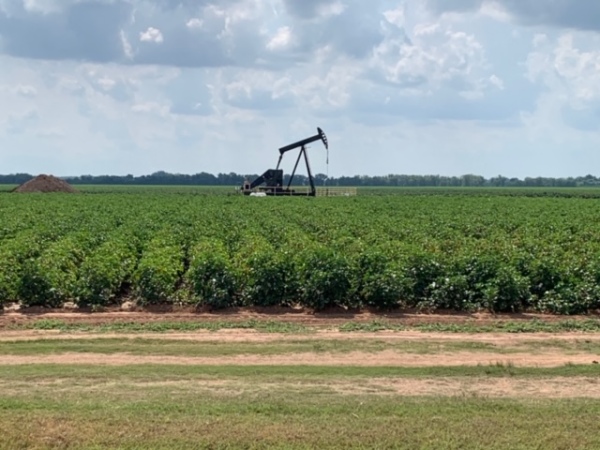
CONTACT INFO
Address:
Exploration Technologies, Inc.
7755 Synott Rd.
Houston, Texas, 77083
Houston, Texas, 77083
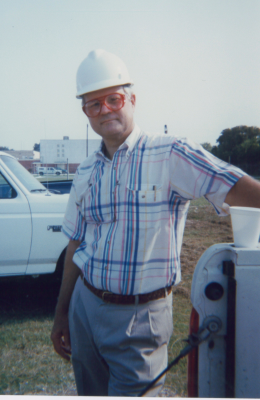
Telephone:
(281) 530-4300
Fax:
(281) 530-4308
Victor T. Jones III, Ph.D. - Founder
Laboratory Services
LIGHT HYDROCARBON ANALYSES
Light hydrocarbon analyses (C1-C4) measure the lightest, most volatile compounds present in natural gas and other petroleum based products. These light hydrocarbon compounds tend to dissipate rapidly with time and/or distance from the point(s) at which petroleum products are introduced into the subsurface environment. The light hydrocarbon analyses allow for the identification and differentiation of natural gas leaks, biogenic methane and refined petroleum product contaminants. Light hydrocarbon compound analyses are also utilized to determine areas of natural gas leakage spills, the presence of gas seepage from deep seated oil and gas reservoirs and/or the leakage from oil and gas well casings.
HIGH RESOLUTION GC C5+ (PENTANE-XYLENES) HYDROCARBON ANALYSES/SOIL VAPOR AND/OR WATER
C5+ (pentane-xylenes+) hydrocarbons analyses which yield a quantitative measure of the actual volume of "gasoline type " vapors present in near surface soils and/or water are conducted on a 30-meter capillary column. Gasoline range hydrocarbons dissipate more slowly than the lighter fraction (C1-C4) compounds and are very useful for finding contaminated soils. A capillary analysis of the gasoline range hydrocarbons also allows individual quantification of the benzene, toluene, ethylbenzene, m &p-xylene and o-xylene aromatic hydrocarbons along with other significant components.
Light hydrocarbon analyses (C1-C4) measure the lightest, most volatile compounds present in natural gas and other petroleum based products. These light hydrocarbon compounds tend to dissipate rapidly with time and/or distance from the point(s) at which petroleum products are introduced into the subsurface environment. The light hydrocarbon analyses allow for the identification and differentiation of natural gas leaks, biogenic methane and refined petroleum product contaminants. Light hydrocarbon compound analyses are also utilized to determine areas of natural gas leakage spills, the presence of gas seepage from deep seated oil and gas reservoirs and/or the leakage from oil and gas well casings.
HIGH RESOLUTION GC C5+ (PENTANE-XYLENES) HYDROCARBON ANALYSES/SOIL VAPOR AND/OR WATER
C5+ (pentane-xylenes+) hydrocarbons analyses which yield a quantitative measure of the actual volume of "gasoline type " vapors present in near surface soils and/or water are conducted on a 30-meter capillary column. Gasoline range hydrocarbons dissipate more slowly than the lighter fraction (C1-C4) compounds and are very useful for finding contaminated soils. A capillary analysis of the gasoline range hydrocarbons also allows individual quantification of the benzene, toluene, ethylbenzene, m &p-xylene and o-xylene aromatic hydrocarbons along with other significant components.
HIGH RESOLUTION GC OF PRODUCT AND SOIL EXTRACTS
High resolution detailed fingerprints are utilized to correlate product accumulations with source of contamination and areal distribution of vapor and dissolved phase constituents in soil and water. High resolution GC of hydrocarbon extracts from soil provides delineation of the areal and vertical extent and type product contamination. These analyses are available with individual component quantification.
High resolution detailed fingerprints are utilized to correlate product accumulations with source of contamination and areal distribution of vapor and dissolved phase constituents in soil and water. High resolution GC of hydrocarbon extracts from soil provides delineation of the areal and vertical extent and type product contamination. These analyses are available with individual component quantification.
CHLORINATED HYDROCARBONS
Soil gas assessments for chlorinated hydrocarbons include analyses for PCE, DCE, TCE, vinyl chloride and other chlorinated solvents using two gas chromatographs: one instrument is equipped with a dry electrolytic conductivity detector (DELCD) and the other with an electron capture detector (ECD). Since the detection limit is relatively high (a few ppm) on the DELCD, the ECD is also used since it has high sensitivity for quantifying chlorinated compounds. The two instruments and methods of detection serve as independent confirmation and quality control. These instruments are excellent for quantifying various chlorinated solvents, and their daughter products, commonly found in subsurface soils and groundwater. Light (C1-C4) hydrocarbon analyses also provide valuable information when used in tandem with chlorinated hydrocarbon constituent analyses. Elevated concentrations of methane, ethane and ethylene (ethene), in areas where elevated concentrations of chlorinated hydrocarbon compounds are present, are indicative of anaerobic biodegradation of chlorinated solvents. Most chlorinated solvents contain either ethane or ethene in their molecular structures, and these more volatile compounds are very helpful in delineating the full areal extent of the subsurface contamination.
Soil gas assessments for chlorinated hydrocarbons include analyses for PCE, DCE, TCE, vinyl chloride and other chlorinated solvents using two gas chromatographs: one instrument is equipped with a dry electrolytic conductivity detector (DELCD) and the other with an electron capture detector (ECD). Since the detection limit is relatively high (a few ppm) on the DELCD, the ECD is also used since it has high sensitivity for quantifying chlorinated compounds. The two instruments and methods of detection serve as independent confirmation and quality control. These instruments are excellent for quantifying various chlorinated solvents, and their daughter products, commonly found in subsurface soils and groundwater. Light (C1-C4) hydrocarbon analyses also provide valuable information when used in tandem with chlorinated hydrocarbon constituent analyses. Elevated concentrations of methane, ethane and ethylene (ethene), in areas where elevated concentrations of chlorinated hydrocarbon compounds are present, are indicative of anaerobic biodegradation of chlorinated solvents. Most chlorinated solvents contain either ethane or ethene in their molecular structures, and these more volatile compounds are very helpful in delineating the full areal extent of the subsurface contamination.
ANALYSIS FOR FIXED GAS (CO2, O2, N2)
If petroleum and/or chlorinated hydrocarbon products are present in subsurface soils or groundwater for a period of time, significant biodegradation of the hydrocarbon compounds occurs. The degradation of hydrocarbon compounds by aerobic and anaerobic bacteria generate significant concentrations of carbon dioxide and methane, respectively, in the subsurface environment. The biodegradation of hydrocarbons by both aerobic and anaerobic bacteria can occur within very close proximity in nature, and can yield elevated concentrations of both carbon dioxide and methane in the subsurface environment. These biochemical reactions are quite common in soils and groundwater containing products such as gasoline, diesel, chlorinated solvents, etc. since such products are excellent food sources for the indigenous bacteria. Carbon dioxide analyses, as well as oxygen and nitrogen, are also performed using a gas chromatograph equipped with a thermal conductivity detector (TCD). The results of these analyses used in tandem with the petroleum and chlorinated hydrocarbon analyses aid in the delineation of the subsurface contaminant plume(s).
Sample Analysis
Soil gas samples are typically analyzed for a variety of natural gas constituents to accurately measure the seep magnitudes and compositions. Due to the very low seepage levels often encountered in the geologic environment it is imperative that only the most accurate gas chromatographs are employed for sample analysis.
Soil gas samples are typically analyzed for a variety of natural gas constituents to accurately measure the seep magnitudes and compositions. Due to the very low seepage levels often encountered in the geologic environment it is imperative that only the most accurate gas chromatographs are employed for sample analysis.
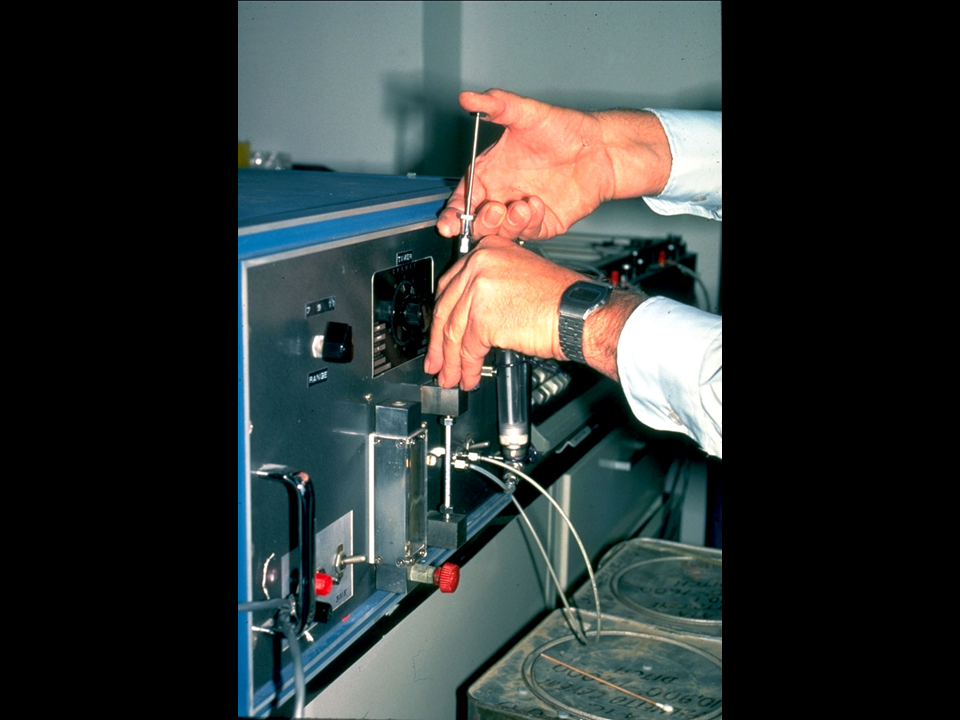
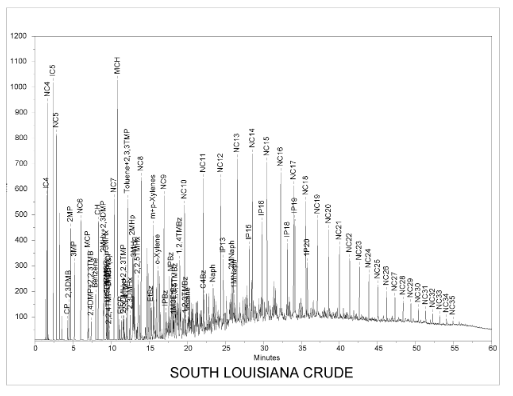
Quality Control Procedures
Several levels of quality control checks are employed during field and laboratory analysis programs to help insure that final analytical results are as accurate as possible.
Sample bottles are cleaned, heated, flushed with laboratory grade nitrogen and sealed with a butyl-rubber septum and aluminum seal prior to shipping. About 3% of all sample bottles are tested for light hydrocarbon contamination as trip blanks prior to leaving Houston. Trip blanks are also analyzed on return to Houston to insure that the sample bottles have not been exposed to contamination during handling and storage.
Field Blanks are collected through the soil gas sample probe at about 5% - 10% of the sample locations to insure that there has been no carry-over contamination between samples and as a measure of the background atmospheric hydrocarbon content of the field areas.
Instrument Calibration includes calibration of each gas chromatograph with an external standard of known concentration and a check standard to insure accuracy. Each instrument's calibration is rechecked at the end of each shift and an additional check standard analyzed to confirm that there has been no loss of sensitivity during the shift.
Data Validation procedures includes a multi-step process which includes review of individual chromatograms by the analyst and further compilation of results and review by the data processing technician to confirm that samples have been properly analyzed. After compilation into a summary data table, results are further reviewed for accuracy by the project manager. If any questions or discrepancies are identified, the sample will be reanalyzed to insure accurate and reliable results. After final review and approval, results are compiled into a series of data listings and plot files for statistical evaluation and map generation.
Several levels of quality control checks are employed during field and laboratory analysis programs to help insure that final analytical results are as accurate as possible.
Sample bottles are cleaned, heated, flushed with laboratory grade nitrogen and sealed with a butyl-rubber septum and aluminum seal prior to shipping. About 3% of all sample bottles are tested for light hydrocarbon contamination as trip blanks prior to leaving Houston. Trip blanks are also analyzed on return to Houston to insure that the sample bottles have not been exposed to contamination during handling and storage.
Field Blanks are collected through the soil gas sample probe at about 5% - 10% of the sample locations to insure that there has been no carry-over contamination between samples and as a measure of the background atmospheric hydrocarbon content of the field areas.
Instrument Calibration includes calibration of each gas chromatograph with an external standard of known concentration and a check standard to insure accuracy. Each instrument's calibration is rechecked at the end of each shift and an additional check standard analyzed to confirm that there has been no loss of sensitivity during the shift.
Data Validation procedures includes a multi-step process which includes review of individual chromatograms by the analyst and further compilation of results and review by the data processing technician to confirm that samples have been properly analyzed. After compilation into a summary data table, results are further reviewed for accuracy by the project manager. If any questions or discrepancies are identified, the sample will be reanalyzed to insure accurate and reliable results. After final review and approval, results are compiled into a series of data listings and plot files for statistical evaluation and map generation.
Methane through Butane Light Hydrocarbons
Methane through butane light hydrocarbon content of soil gases are measured using a computer controlled flame ionization detector (FID) gas chromatograph. The system was designed specifically for trace light hydrocarbon analysis of soil gas samples and has a detection limit of about 0.010 parts per million (ppm) for individual light hydrocarbon components. Results are computed as parts per million hydrocarbons by volume as compared to an external standard.
Samples with methane concentrations greater than about 10 ppm, which is often too high to allow adequate separation of methane and ethane components, are also analyzed on a second GC with a longer run time. This method allows for a much more accurate measurement of the ethane and ethylene concentrations.
Non Hydrocarbon Gases
Helium and hydrogen analyses are performed by computer controlled thermal conductivity detector (TCD) gas chromatography by flow through methods simultaneously with the light hydrocarbon analysis on a duel FID/TCD gas chromatograph. The detection limit for helium is between 10-20 ppm, and hydrogen is about 2 ppm by volume. Ambient air analysis by this method generally yields helium values in the 10-20 ppm range because of interference by neon, even though atmospheric helium values are only 5.24 ppm. Atmospheric hydrogen values are only 0.5 ppm, and are below the detection limit using a thermal conductivity detector.
Methane through butane light hydrocarbon content of soil gases are measured using a computer controlled flame ionization detector (FID) gas chromatograph. The system was designed specifically for trace light hydrocarbon analysis of soil gas samples and has a detection limit of about 0.010 parts per million (ppm) for individual light hydrocarbon components. Results are computed as parts per million hydrocarbons by volume as compared to an external standard.
Samples with methane concentrations greater than about 10 ppm, which is often too high to allow adequate separation of methane and ethane components, are also analyzed on a second GC with a longer run time. This method allows for a much more accurate measurement of the ethane and ethylene concentrations.
Non Hydrocarbon Gases
Helium and hydrogen analyses are performed by computer controlled thermal conductivity detector (TCD) gas chromatography by flow through methods simultaneously with the light hydrocarbon analysis on a duel FID/TCD gas chromatograph. The detection limit for helium is between 10-20 ppm, and hydrogen is about 2 ppm by volume. Ambient air analysis by this method generally yields helium values in the 10-20 ppm range because of interference by neon, even though atmospheric helium values are only 5.24 ppm. Atmospheric hydrogen values are only 0.5 ppm, and are below the detection limit using a thermal conductivity detector.
